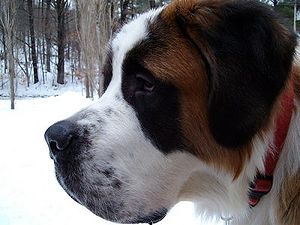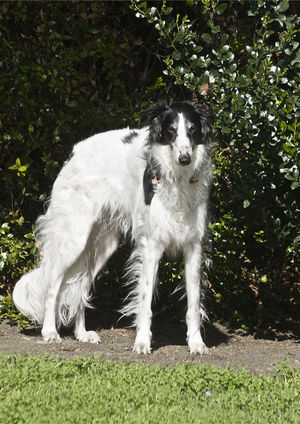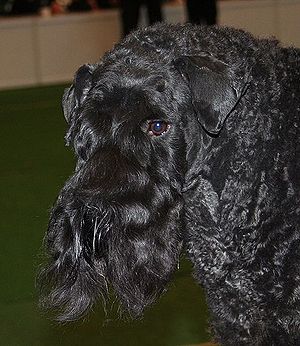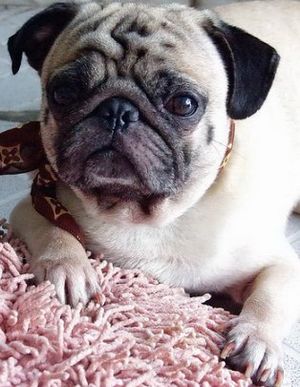 |
| Vital Statistics: |
| Place of Origin: Switzerland |
| Group: Working dog |
| Height: males 27 in. minimum, females 25 in. minimum |
| Weight: 120-200 lbs. |
| Life span: 8-10 yrs. |
| Trainability: high |
| Good with children: yes but take care with toddlers due to size of dog |
| Good with other pets: usually, with early socialization |
February’s dog of the Month
This massive dog, a great predictor of avalanches, is loving with both children and adults.
The Saint Bernard is descended from the Tibetan Mastiff which, with other mastiffs, was probably brought to the Alps by the Romans more than 2000 years ago. Monks at the Hospice of St. Bernard de Menthon near the Great St. Bernard Pss, developed the Saint Bernard dog. An image of the Saint Bernard appeared in 1350 on a Swiss coat of arms. The Saint Bernard is also known as the Alpine Mastiff and the St. Bernhardshund.
What does the Saint Bernard look like?
There are two types of Saint Bernard, the rough-coated and the smooth-haired. Both are robust and muscular dogs. The head is massive, with a wrinkled brow, a short muzzle and a black nose. Height can range from 25 inches minimum for females, 27 inches minimum for males and weight from 120-200 lbs. The upper lip hangs down. Eyes are dark brown, slightly sunken with drooping eyelids. Ears are medium sized and lie close to the head. The tail is long and feathered in the rough-coated variety. Rough-coated dogs have thick flat medium length hair that is slightly wavy. The short-haired Saint Bernard has very thick,short, shiny hair lying close to the body. Colors are red with white markings or white with red markings. Both have dark face masks. Care should be taken in hot weather to ensure the dog has a cool place to lie in.
What is the Saint Bernard’s temperament?
The Saint Bernard is excellent with both children and adults. It trains easily, is steady, very loyal and obedient. It needs early socialization and training to avoid problems due to its huge size as adult dogs. The Saint Bernard sometimes does not get along with small dogs. It is very intelligent and seems to be able to predict when an avalanche will occur.
What are the Saint Bernard’s uses?
The Saint Bernard excels as a rescue dog in the Alps for lost climbers and people buried in avalanches. With its endurance and sense of smell, the Saint Bernard has saved many lives. The Saint Bernard does not need a great amount of exercise, but enough to prevent problems with the hindquarters. Because of its gentle and friendly nature, it’s not a very good watch dog or guard dog. While not suited to apartment living, the Saint Bernard is a loving and very loyal companion dog.
Possible Health Issues
Hip/elbow dysplasia, cardiomyopathy, cancer, eye problems including entropion, ectropion, osteochodrosis, hypothyroidism, bloat/gastric torsion
- Akbash Dog
- Alaskan Malamute
- Anatolian Shepherd Dog
- Appenzell Mountain Dog
- Belgian Malinois
- Boxer
- Burnese Mountain Dog
- Canaan Dog
- Chinook
- Deutscher (German) Pinscher
- Doberman Pinscher
- Dogue de Bordeaux
- Estrela Mountain Dog
- German Spitz (Giant, Standard, Toy)
- Giant Schnauzer
- Great Dane
- Greater Swiss Mountain Dog
- Greenland
- Irish Red & White Setter
- Kai Ken
- Korean Jindo Dog
- Kuvasz
- Laika
- Leonberger
- Newfoundland
- Norwegian Elkhound
- Rat Terrier
- Rottweiler
- Samoyed
- Siberian Husky
- Standard Schnauzer
- Tibetan Mastiff



